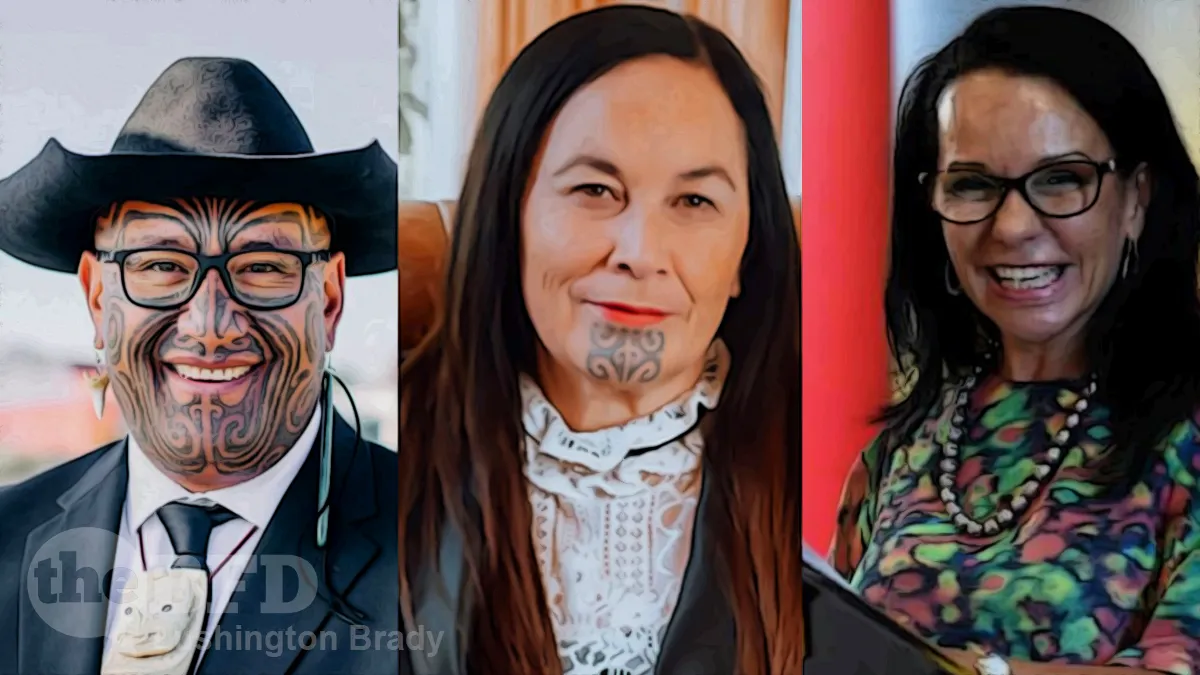Table of Contents
It’s rather noticeable that the “indigenous” culture-vultures on both sides of the Tasman show no inclination to actually live the authentic lives of the cultures they play-act at. Raiwiri Waititi is no sooner going to turn in his natty suits for a grass skirt and grub in the mud for kumara, or chow down on some long pig, than Linda Burney is to ditch her Gucci and pearls and scratch in the dirt wearing nothing but some ochre.
These people are cultural LARPers (LARP is “Live Action Role Playing”), playing dress-ups and role-playing just one selected segment of their mixed ethnic heritages for career advancement.
On the other hand, people who genuinely lived in the culture these play-acting fools pretend to venerate didn’t hesitate to leave it behind. While tick-a-box academics and media tarts prattle a pidgin of English and “University Maori”, their genuinely Maori-speaking grandparents begged schools to teach their children English so that they could get ahead in the modern world.
Australian academic William Stanner documented the migration patterns of Aboriginal Australians in the Northern Territory.
[He] found regions ‘entirely empty of its former inhabitants.’ The remarkable thing about this migration was that it was not primarily caused by disease, violence or dispossession but instead occurred voluntarily.
During the Industrial Revolution, rural English voluntarily flocked to the slums of the cities, because, appalling as the Road to Wigan Pier might be, it was better than what they left behind. Today, in remote Central Asia, the provinces of China, or rural Africa, people flock to the city slums and shanty towns for the same reason.
In his book ‘White Man Got no Dreaming (1979), Stanner notes that many Aboriginal people had migrated to cattle stations while others went as far as Darwin. He argued that there was no evidence the migration was anything other than voluntary. European settlement was miles away. There was no forced labour or dispossession of land. Police violence was absent too. In fact, so remote were these communities that inter-tribal Aboriginal warfare was a greater threat to Indigenous communities than colonisation. Interestingly, this is not Stanner’s explanation, but of the Aboriginals themselves […]
for every Aboriginal who, so to speak, had Europeans thrust upon him, at least one other had sought them out. More would have gone to European centres sooner had it not been that their way was often barred by hostile Aborigines. As late as the early 1930s I was able to see for myself the battles between the encroaching myalls and weakening, now-sedentary groups who had monopolised European sources of supply and work.
Stanner never encountered an Aboriginal who ever wanted to return to the bush and their traditional way of life, even in cases of miserable urban circumstances. They simply ‘went because they wanted to, and stayed because they wanted to.’
This is just as true of the embarrassing ancestral skeletons in the closets of the loudest-mouthed “indigenous” activists, many of whose white ancestors clearly outnumbered their Aboriginal ascendants in significant numbers. Rather than products of “frontier violence”, these were people who intermarried simply because they wanted to.
He observed that ‘the Aboriginal women single or married, were eager for associations with Europeans and Chinese. While ready enough for casual affairs, they tried by any and all means to make semi-permanent or permanent attachments.’
While noticeably unwilling to ditch the comforts of modern, Western life, the “re-indigenisation” activists too often seem to prefer that others be left behind in miserable squalor, as some kind of living museum-pieces.
Some critics use the connection Aboriginal people have to country to justify Aboriginal cultural stasis. This ignores the simple fact that Aboriginal people can both have a connection to their land and want to migrate to improve their living condition. For example, Stanner saw ‘a man, revisiting his homeland after an absence, fall on the ground, dig his fingers in the soil, and say: ‘O, my country.’ But he had been away, voluntarily; and he was soon to go away again voluntarily.’
Quadrant Online
It’s almost as if indigenous people are intelligent adults with agency, who might choose to better their circumstances given the chance, rather than live in “cultural” squalor.









